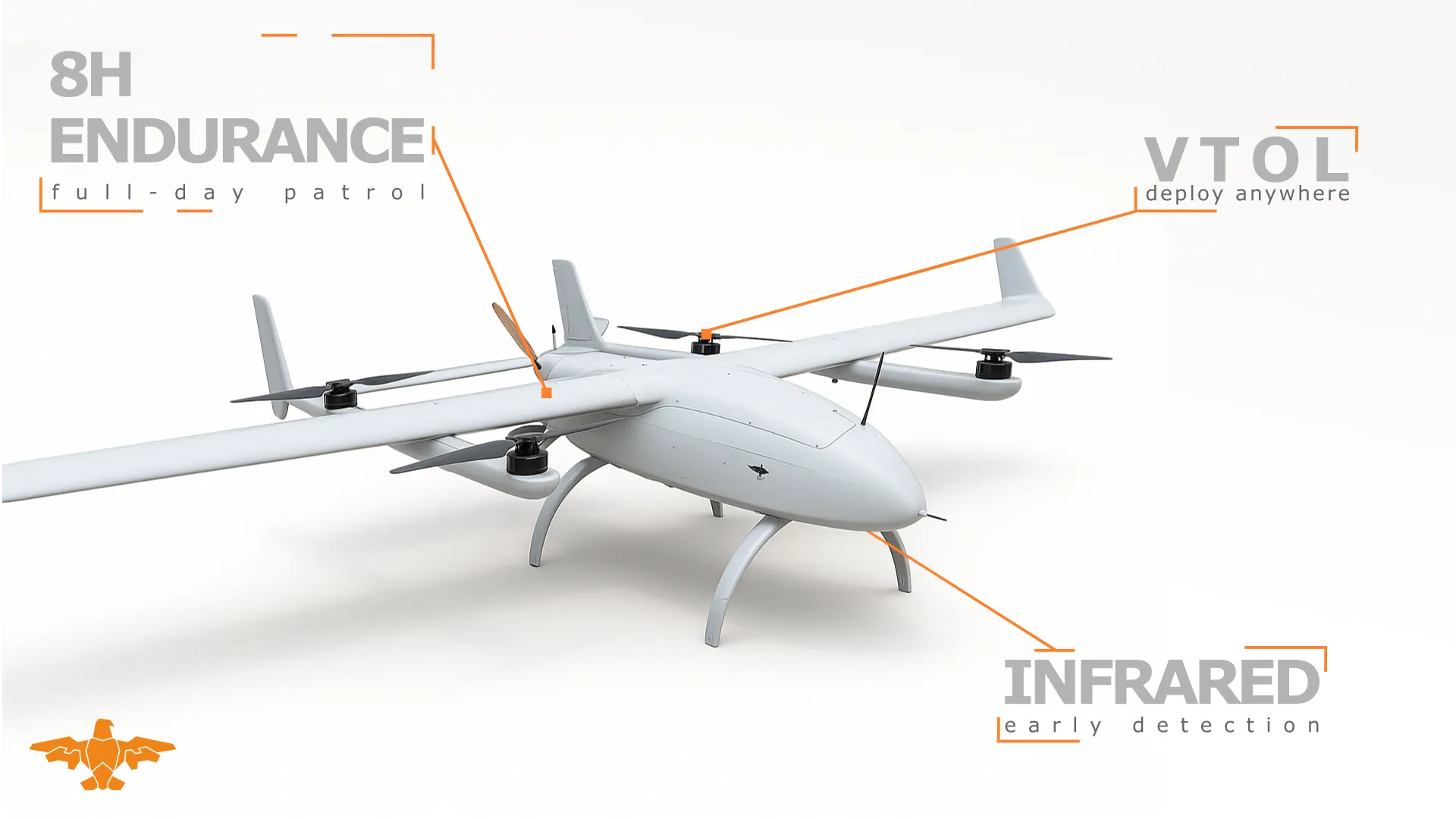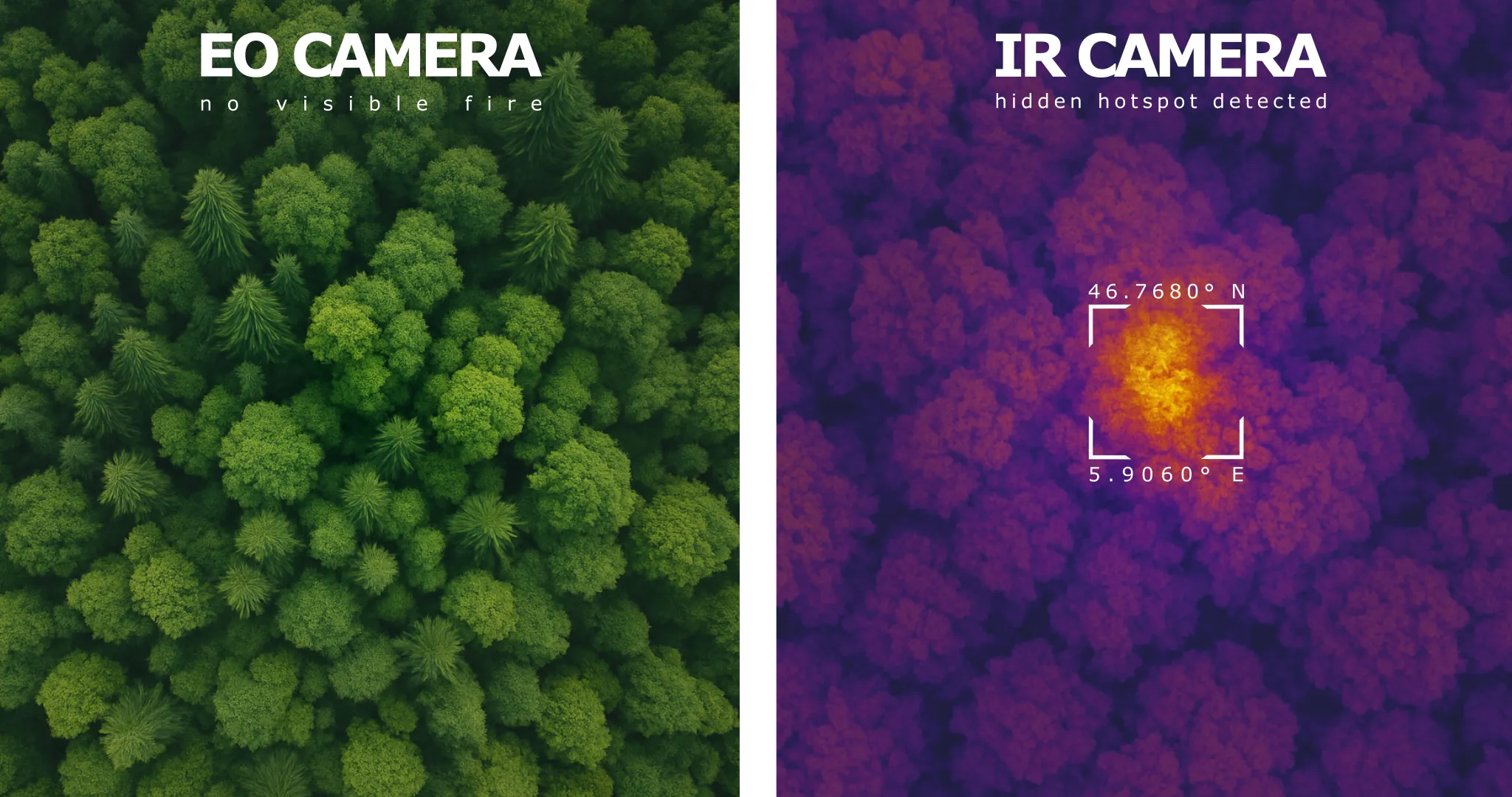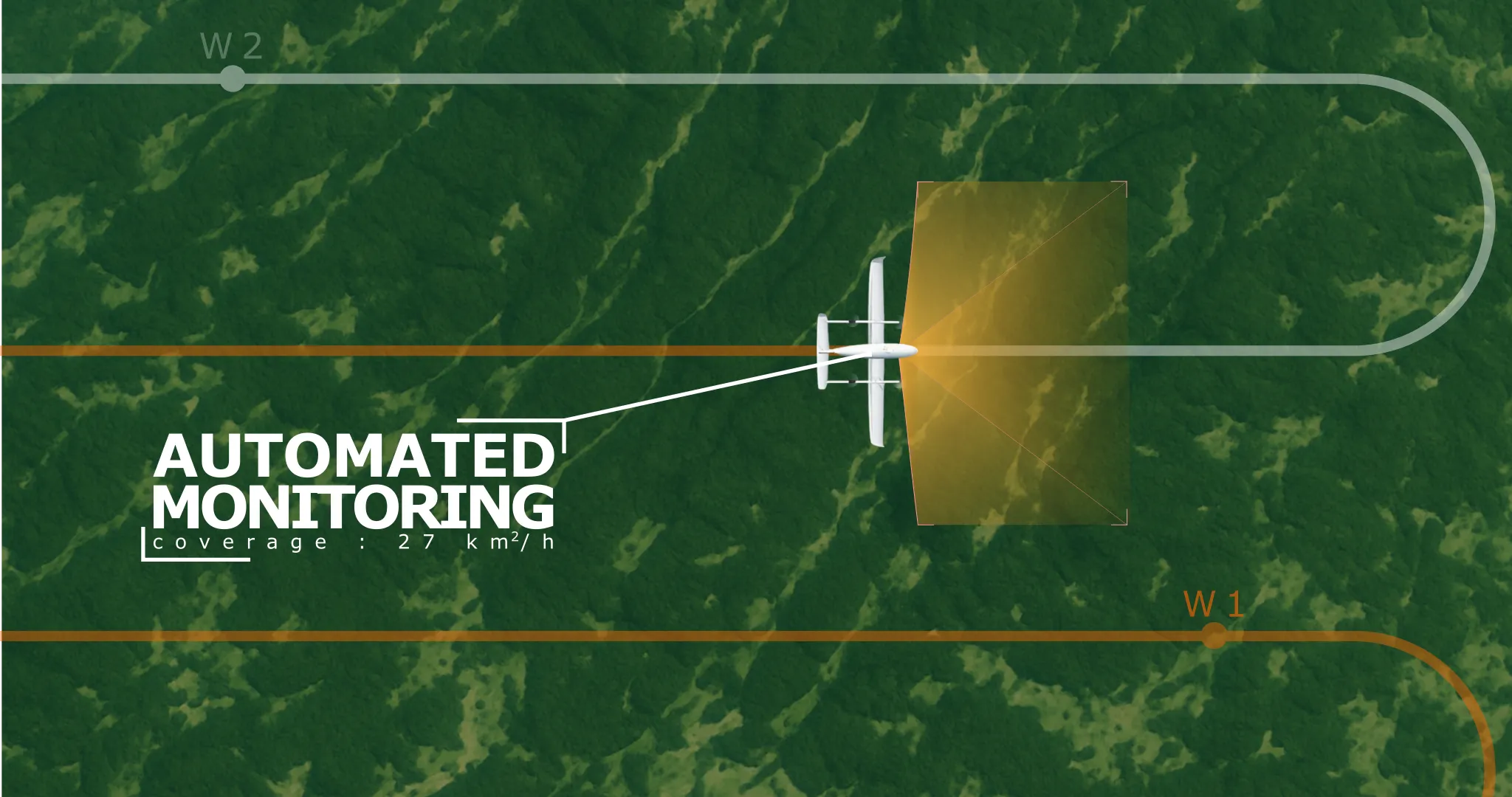Digital Eagle YFT-CZ45 – VTOL Fixed-Wing Drone for Wildfire Prevention
Digital Eagle YFT-CZ45 – VTOL Fixed-Wing Drone for Wildfire Prevention
Oct 10, 2025
Digital Eagle YFT-CZ45: The Ultimate UAV VTOL Fixed-Wing Drone for Wildfire Prevention and Firefighting
Introduction: UAVs at the Core of Modern Firefighting
Wildfires are one of the most pressing environmental and safety threats in the world today. Rising global temperatures and climate change are driving more frequent and more destructive forest fires, putting ecosystems, human lives, and infrastructure at risk. Traditional firefighting methods alone are often insufficient, as they are costly, manpower-intensive, and limited in scope.

This is where UAVs (Unmanned Aerial Vehicles) come in. Modern drones provide a strategic advantage for both wildfire prevention and active firefighting missions. Among the latest innovations, the Digital Eagle YFT-CZ45 stands out as a VTOL fixed-wing UAV designed for long-range endurance and versatility. When paired with the advanced YPO-A2-30 EO/IR gimbal camera, it becomes a powerful aerial surveillance and firefighting support system.
Technical Overview of the YFT-CZ45 UAV
Hybrid Design for Maximum Flexibility
The YFT-CZ45 UAV is engineered as a VTOL fixed-wing drone, blending the vertical takeoff and landing (VTOL) capability of a multirotor with the endurance and speed of a fixed-wing aircraft.
VTOL capability: Operates in areas without runways.
Fixed-wing flight: Provides long-range efficiency and high cruising speed.
Hybrid architecture: Bridges the gap between short-range quadcopters and runway-dependent UAVs.
This dual system ensures the YFT-CZ45 can handle a wide variety of missions across challenging terrain.
Key Specifications
Wingspan: 4,500 mm
Maximum payload: 20 kg
Cruising speed: 100–130 km/h
Maximum climb rate: 5 m/s
Endurance: 6–8 hours depending on payload
Takeoff weight: <70 kg
Operational altitude: <4000 m
Wind resistance: 8–13.8 m/s
Power system: Hybrid
With its long endurance, high payload capacity, and stable VTOL deployment, the YFT-CZ45 is tailored for extended aerial surveillance, particularly in wildfire-prone areas.
The YPO-A2-30 EO/IR Camera: A Critical Tool for Firefighting UAVs
Optical and Infrared Power in One Unit
The YPO-A2-30 3-axis EO/IR gimbal camera is designed specifically for UAV applications that demand real-time situational awareness. For wildfire detection and monitoring, it offers crucial imaging capabilities:
Optical resolution: 1920×1080 HD video, 2 million pixels.
Thermal imaging: 640×512 / 1280×1024 resolution, wavelength 8–14 μm.
Zoom capability: 30x optical zoom for precise long-distance tracking.
Stabilization: 3-axis gimbal with <0.1° accuracy.
Weight: <1.1 kg, perfectly suited for UAV integration.
Operational temperature: -40°C to +60°C, all-weather compatible.
AI recognition: Automatic hotspot detection and point zoom tracking.
Why EO/IR Imaging is Essential for Firefighting UAVs
24/7 monitoring: Operates day and night regardless of visibility.
Early hotspot detection: Thermal sensors identify abnormal heat signatures before visible flames appear.
Fire progression tracking: Provides live updates on how a fire spreads.
Post-fire analysis: Enables mapping of burnt zones and damage assessment.
Together, the YFT-CZ45 UAV and YPO-A2-30 EO/IR camera create a highly reliable, AI-supported aerial firefighting system.
Advantages of the YFT-CZ45 VTOL Fixed-Wing UAV in Firefighting
1. Early Wildfire Detection

With up to 8 hours of endurance, the YFT-CZ45 can patrol vast forests and detect hotspots before they escalate into uncontrollable wildfires. This capability for proactive prevention is a core function of UAV firefighting systems.
2. Real-Time Fire Surveillance
The EO/IR camera provides live video transmission to command centers. Emergency response teams receive real-time intelligence on fire spread, wind influence, and new ignition points.
3. Rapid and Precise Response
With its 30x optical zoom and AI-based hotspot recognition, the UAV helps ground teams pinpoint exact fire locations and prioritize firefighting resources.
4. Coverage of Inaccessible Areas
The YFT-CZ45 excels in mountainous and remote forest regions where helicopters and ground patrols struggle. Its VTOL capability means it can be deployed from small clearings without the need for airstrips.
5. Cost-Effective Operations
Operating UAVs is significantly cheaper than manned aircraft missions. The YFT-CZ45 reduces both manpower and operational costs, making it an efficient firefighting UAV solution.

Applications in Firefighting and Forest Patrol
Automated Forest Patrols
The YFT-CZ45 can be programmed with waypoint route planning, enabling fully automated patrols over fire-prone areas. Any anomaly detected by the thermal camera triggers an alert.
Active Fire Monitoring
During active wildfires, the UAV functions as a persistent aerial surveillance platform, guiding firefighting aircraft, directing ground units, and enhancing operational safety.
Post-Fire Assessment
After suppression, the UAV generates high-resolution maps for environmental recovery planning, damage evaluation, and future risk assessment.
Comparison with Other UAV Firefighting Platforms
Versus Multirotor Drones
Multirotor drones: typically 30–60 min flight time.
YFT-CZ45 VTOL fixed-wing UAV: 6–8 hours flight time.
Conclusion: Multirotors are limited to spot inspections, while the YFT-CZ45 handles long-range, extended missions.
Versus Traditional Fixed-Wing UAVs
Traditional fixed-wings require a runway for takeoff and landing.
The YFT-CZ45's VTOL capability effectively removes the runway requirement, significantly enhancing its operational versatility in challenging wildfire environments.
Additional Uses Beyond Firefighting
Although optimized for wildfire prevention, the YFT-CZ45 UAV also performs exceptionally in other fields:
Precision agriculture: Monitoring crops and optimizing irrigation.
Security and border patrol: Surveillance of large territories.
Logistics: Delivery of emergency supplies or equipment (up to 20 kg).
Search and Rescue (SAR): Locating missing persons with thermal imaging.
Limitations and Considerations
Weather dependency: While resistant to winds up to 13.8 m/s, storms and extreme conditions reduce efficiency.
Operator training: UAV pilots require professional training for optimal use.
Maintenance requirements: As a high-performance system, regular servicing is needed.
The Future of Firefighting UAVs
The rise of VTOL fixed-wing UAVs like the YFT-CZ45 signals the future of firefighting. Equipped with AI, EO/IR cameras, and long endurance power systems, drones will increasingly act as autonomous fire sentinels.
Future developments may include:
Automated fire retardant release systems on UAVs.
Networked UAV fleets for continuous monitoring.
Satellite-UAV hybrid systems for global fire prevention networks.
FAQ – UAV Firefighting with VTOL Fixed-Wing Drones
1. Why use UAVs in wildfire prevention?
Because UAVs enable continuous, cost-effective surveillance of vast forests, reducing the risk of undetected ignition.
2. What makes the YFT-CZ45 different from other drones?
It is a VTOL fixed-wing UAV with both vertical takeoff and long endurance flight capability.
3. How long can the YFT-CZ45 fly?
Up to 6–8 hours depending on payload.
4. What is the role of the YPO-A2-30 camera in firefighting?
It provides dual EO/IR imaging, detecting hotspots early and tracking fire progression in real time.
5. Can UAVs replace firefighting aircraft?
No, but they complement manned aircraft by providing precise data and continuous aerial monitoring.
6. What other fields can the YFT-CZ45 be used for?
Agriculture, logistics, security, search and rescue, and environmental monitoring.
Conclusion
The Digital Eagle YFT-CZ45 UAV VTOL Fixed-Wing paired with the YPO-A2-30 EO/IR camera is a next-generation solution for wildfire prevention and firefighting operations. Its ability to fly for up to 8 hours, carry advanced imaging payloads, and operate without a runway makes it one of the most powerful firefighting UAVs available today.
As climate challenges intensify, UAVs like the YFT-CZ45 are poised to become an essential tool for protecting forests, saving lives, and mitigating the impact of wildfires.
Investing in VTOL fixed-wing UAV firefighting technology is not just a strategic decision—it is a necessity for the future of global disaster management.
Recent Posts

October 26, 2016
The Most Successful Engineering Contractor
Jun 27, 2025
UAV Training Academies
May 21, 2025
WHY INTEGRATE DRONES IN SMART CITIES?
Apr 22, 2025
WILDLIFE MONITORING AND CONSERVATION APPLICATION
Apr 09, 2025
How Drones Are Changing Disaster Response
Mar 20, 2025
How to improve border security?

